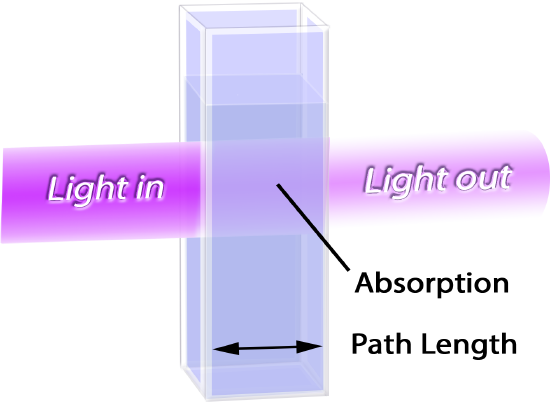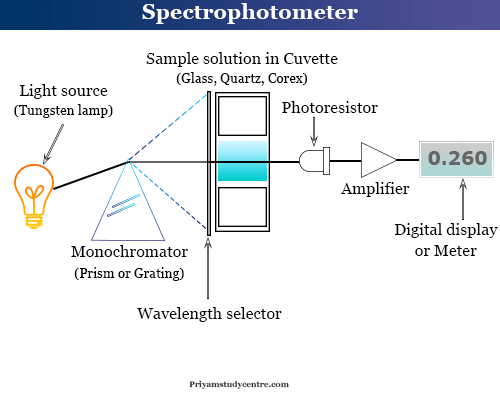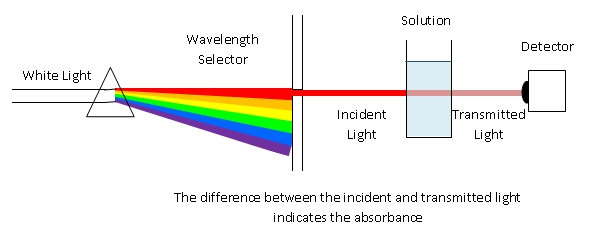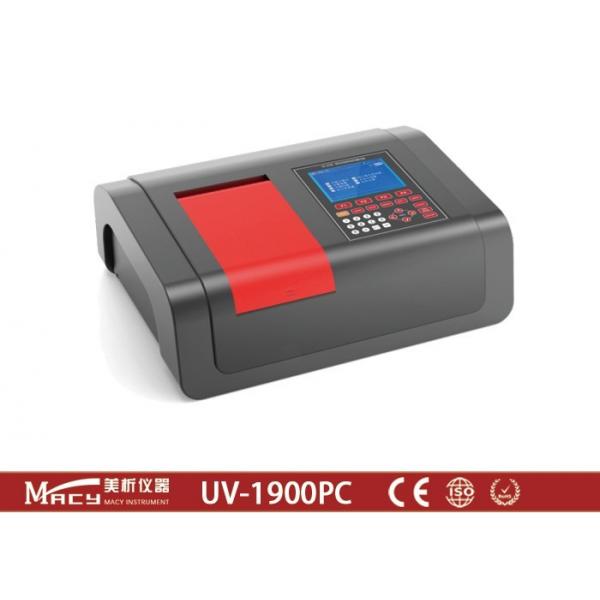A spectrophotometer is a device that measures the intensity of light as it passes through a sample, or is absorbed by a sample. In biology, spectrophotometers are used to measure the concentration of substances in solution, such as proteins, nucleic acids, and small molecules. They can also be used to measure the purity of these substances, as well as the kinetics of reactions involving these substances.
One of the main uses of spectrophotometers in biology is for quantifying the concentration of proteins in solution. Proteins are important biomolecules that perform a variety of functions in cells, such as catalyzing chemical reactions, transporting molecules, and providing structural support. The concentration of proteins in solution can be determined by measuring the absorption of light at a specific wavelength, called the protein's absorption maximum. This is because proteins absorb light at specific wavelengths due to the presence of certain amino acids in their structure, such as tryptophan and tyrosine. By measuring the absorption of light at the absorption maximum of a protein, it is possible to determine the concentration of the protein in solution.
Spectrophotometers can also be used to measure the concentration of nucleic acids, such as DNA and RNA, in solution. Nucleic acids are long, linear polymers made up of nucleotide monomers, and they play important roles in the storage and expression of genetic information. Like proteins, nucleic acids absorb light at specific wavelengths due to the presence of certain base pairs, such as adenine and thymine in DNA. By measuring the absorption of light at the absorption maximum of a nucleic acid, it is possible to determine the concentration of the nucleic acid in solution.
In addition to measuring the concentration of biomolecules in solution, spectrophotometers can also be used to measure the purity of these substances. For example, if a sample of protein is being purified, it is important to ensure that the sample is pure and free of contaminants. By measuring the absorption of light at multiple wavelengths, it is possible to determine the presence of any impurities in the sample.
Spectrophotometers can also be used to study the kinetics of reactions involving biomolecules. For example, the rate at which an enzyme catalyzes a chemical reaction can be determined by measuring the change in the concentration of a substrate over time. By measuring the absorption of light at a specific wavelength, it is possible to follow the progress of a reaction and determine the rate at which it occurs.
In conclusion, spectrophotometers are versatile and widely used tools in biology, with applications ranging from quantifying the concentration of biomolecules in solution, to measuring the purity of these substances, to studying the kinetics of reactions involving these substances. They provide important information that is essential for understanding the function and behavior of biomolecules, and they play a crucial role in many areas of biological research.









